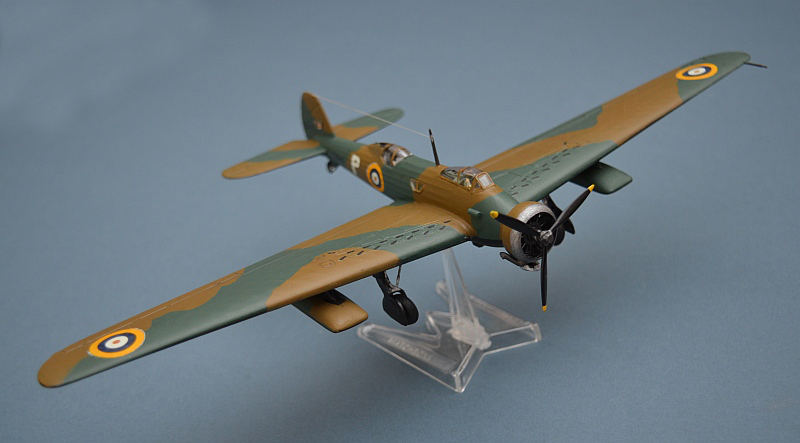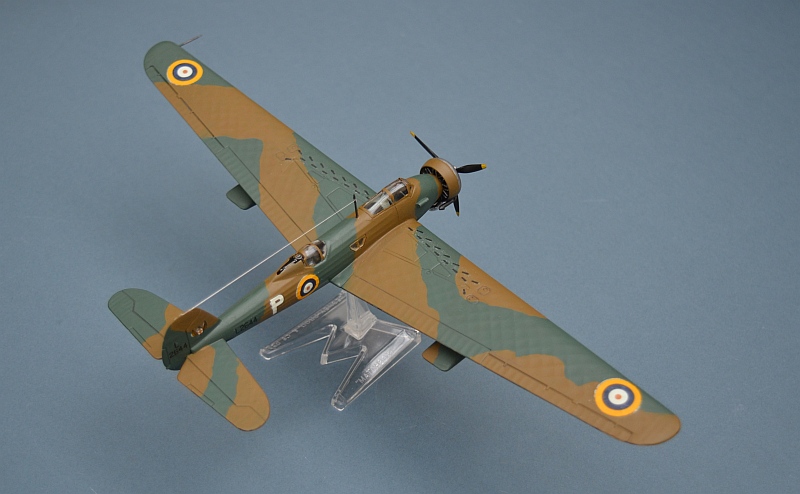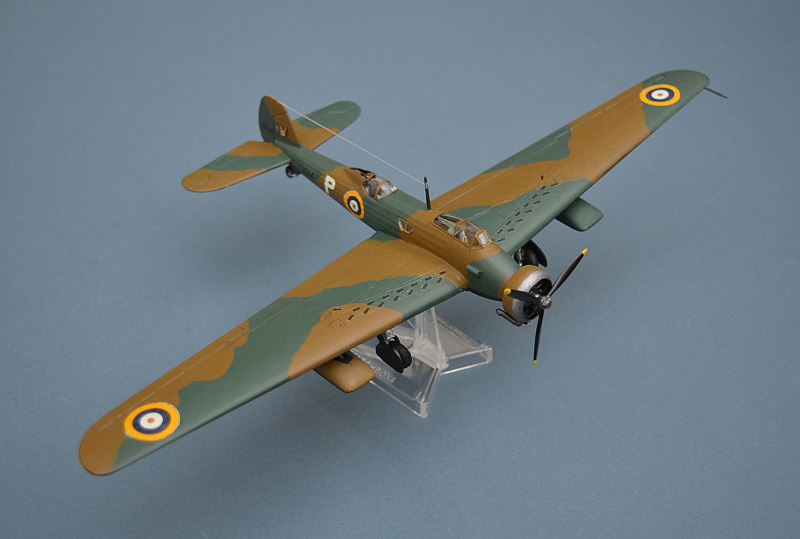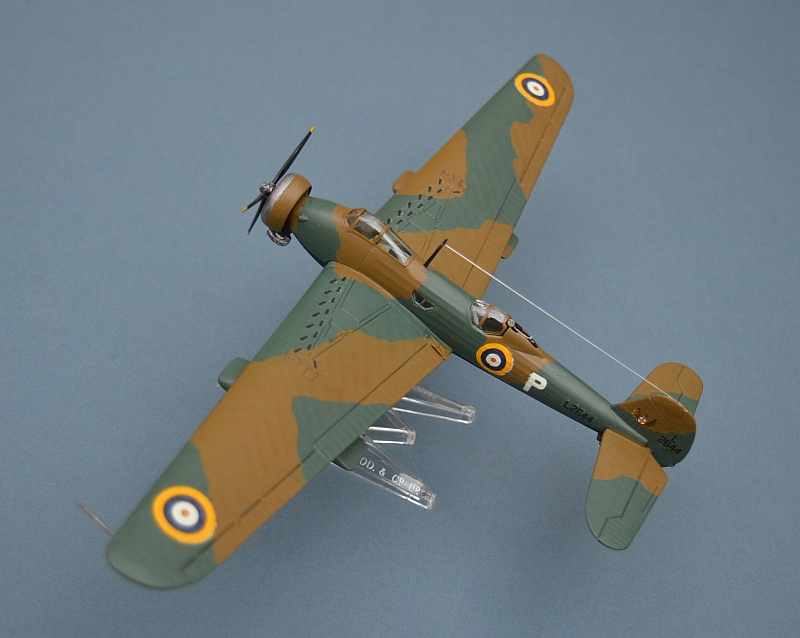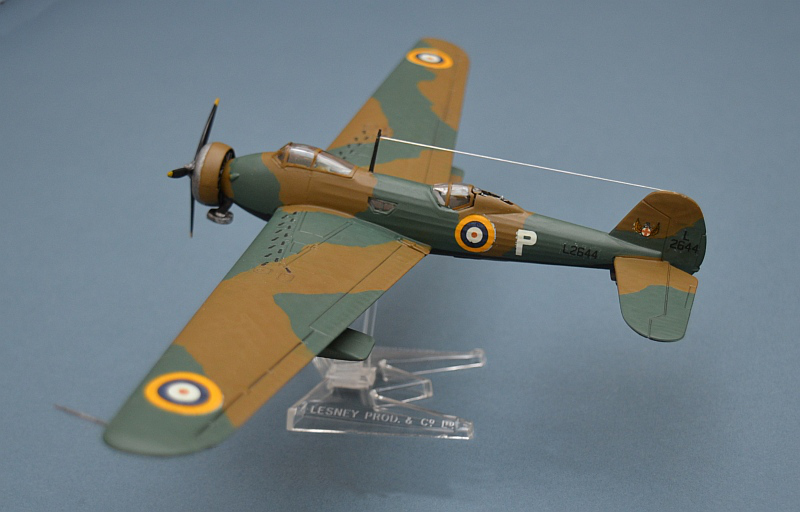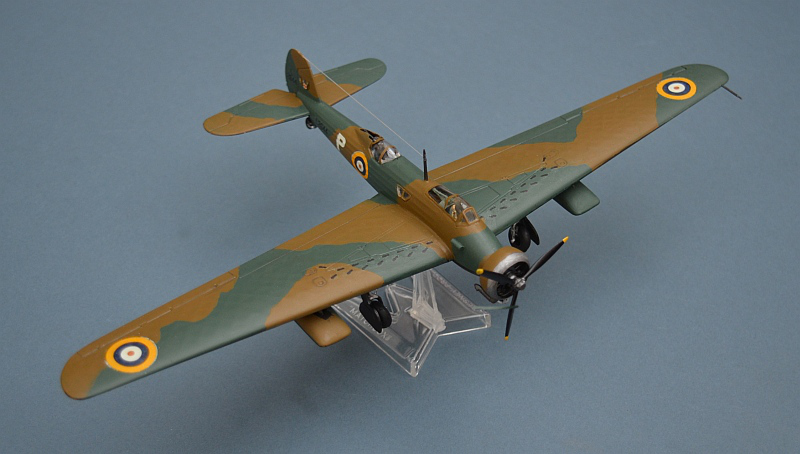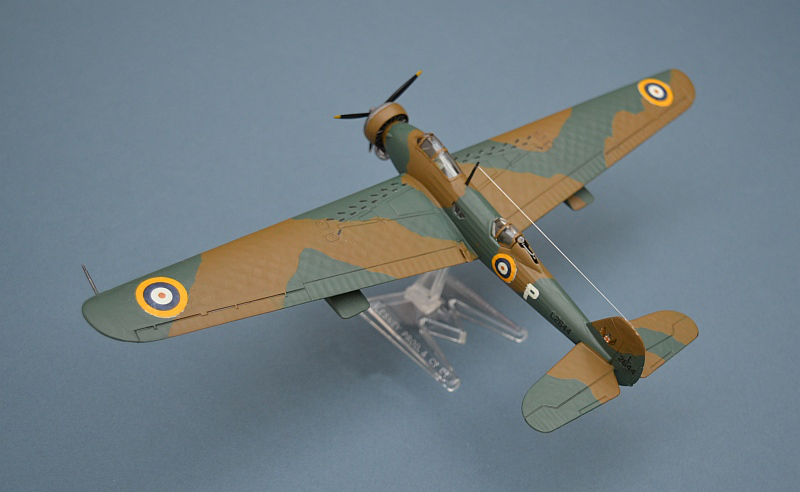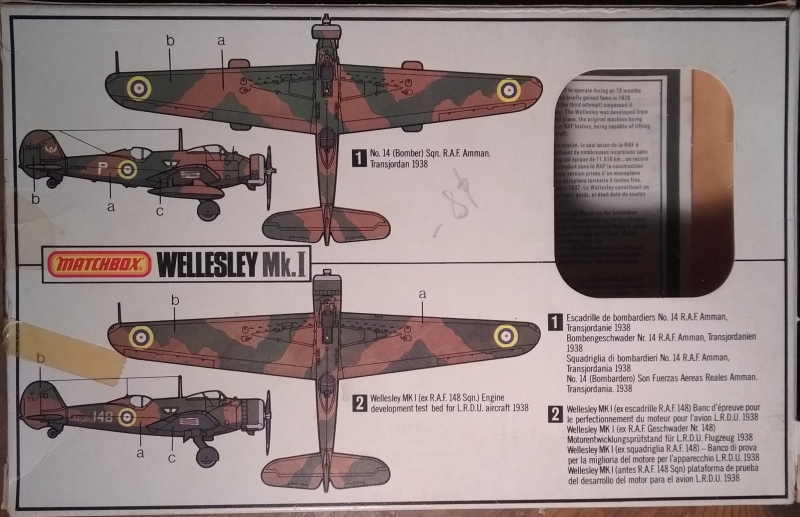February 2019
Vickers Wellesley Mk.1
Vickers Type 287 Wellesley
14 Sqn Royal Air Force, RAF Amman, Transjordan 1938.
Matchbox 1/72
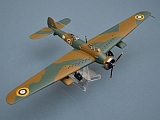
© www.gengriz.co.uk
Have a look at many more of my models of RAF Aircraft my Friends and Allies pages
The Vickers Wellesley entered service with the RAF in 1937, with an order for 176 aircraft to equip 7 light bomber squadrons. Based on the innovative geodetic construction method invented by Sir Barnes Wallis for the R100 airship and intended to be multi role capable (including level and dive bombing, close tactical support and spotting, reconnaissance, torpedo strike and casualty evacuation), it was clearly obsolete before WW2 had even started, with inadequate speed from its single Pegasus engine and a pitifully small bomb load.
Whilst designing the Wellesley, Barnes Wallis was unsure how the radical structure would perform if a bomb bay was added, so under wing panniers were used to carry the 2,000 lb bomb load and these further reduced performance. However, the monocoque geodetic construction method, with its roomy unobstructed interior, proved very successful and would go on to be used in the ubiquitous Wellington Medium Bomber, where its resistance to battle damage proved an invaluable attribute.
Background: an Avro Lancaster of the BBMF rolls past at RIAT 2018
Building the Matchbox Wellesley:
This one is a bit of a blast from the past, although not that far in the past; the
box says “Copyright 1979”, so only 40 years! Although generally regarded as a bit
toy-
Building this kit provided no particular problems, although you do have to take care with the separate nose pieces (provided to allow the record holding long range development version to be built as well) in order to get a clean joint and the undercarriage wheels are rather loose on their axles, making alignment a little hit or miss. The cockpit has a nice instrument panel, but nothing more than a bench seat. The geodetic structure on the wings is nicely represented and its definitely better than that provided on some more recent model kits of geodetic aircraft.
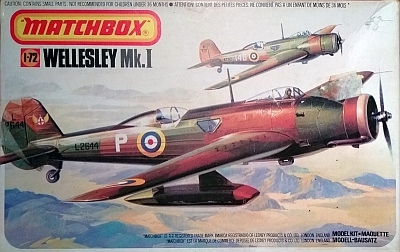
The Wellesley achieved a number of long range records in its early days, including
a distance record from Ismalia in Egypt to Darwin in Australia, a distance of 7,162
miles and a record that remained unbroken until 1945 and is still (2018) the longest
recorded flight by a single piston-
After the Italian declaration of war in 1940, Wellesleys still equipped 3 squadrons in the Middle East, and these participated in operations over Eritrea, Ethiopia and Somalia until the end of 19412, with one remaining squadron then switching to maritime patrols over the Red Sea until September 1942.
The area behind the pilot does need a little scratch work in plastic card as this
should not be empty. Replacement vac-
A choice of two markings are provided, with transfers for 14 Sqn and for one of the long range development aircraft. These are typical Matchbox, with accurate printing, thin and acceptably stretchy and limited stencilling. Unfortunately they also produce a nasty white glue bloom when in contact with water – I suspect this is due to age and has been a typical feature of all the older Matchbox kits I have built (wipe it off, it will go yellow with time).
All in all, this was a pleasant build of an interesting (but rather ugly) early WW2 aircraft.
